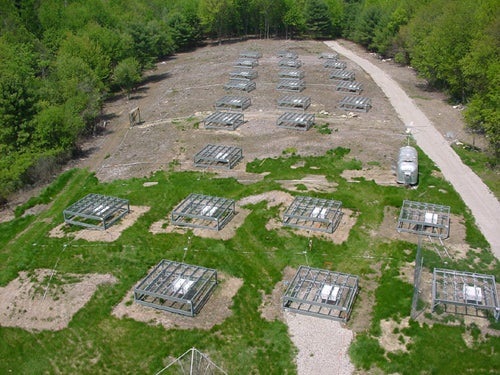Astrophysicists at Massachusetts Institute of Technology’s (MIT) Haystack Observatory in Westford, Massachusetts, have detected deuterium’s radio signature for the first time. They measured the deuterium-to-hydrogen ratio as 23 parts per million, which is close to the Wilkinson Microwave Anisotropy Probe prediction of 25 parts per million.
The amount of deuterium detected puts a constraint on the ratio of radiation-to-ordinary matter. This ratio is related to the amount of matter in the early universe, therefore giving cosmologists clues about the nature of dark matter.
Deuterium is also known as “heavy hydrogen.” While hydrogen is composed of one proton and one electron, deuterium has one proton, one electron, and one neutron.
Deuterium’s signal is difficult to detect because there is only about one deuterium atom for every 100,000 hydrogen atoms, and deuterium’s spectral lines lie close to hydrogen’s in the optical spectrum. However, the elements’ emission lines can be far enough apart in the radio spectrum to distinguish between the two.
The astrophysicists, led by Alan E. E. Rogers of MIT, detected the signal at a frequency of 327 megahertz, which corresponds to a wavelength of 92 centimeters. Deuterium’s 92-centimeter signature emission line is similar to hydrogen’s 21-centimeter line, whose detection has helped astronomers map the structure of the Milky Way.
Because deuterium’s radio signal is so weak, the scientists had to block out radio interference — and, in a few cases, ask Haystack Observatory neighbors to turn off their radio signal sources to accommodate the experiment.
The array at Haystack Observatory has 1,152 elements: 24 stations with 24 crossed dipoles at each station, and was completed in June 2004. The scientists observed in the direction opposite the galactic center for 10 months — from June 29, 2004, to April 29, 2005. Their findings were published in The Astrophysical Journal Letters (September 1, 2005).










